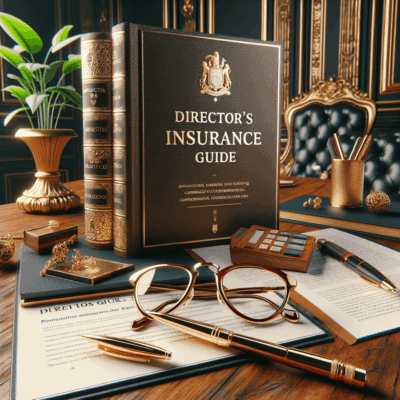Understanding the Imperative of a Directors Insurance Plan
In the complex and often litigious landscape of modern business, the role of a corporate director carries immense responsibility and, consequently, significant personal risk. Decisions made in the boardroom, even those made in good faith with the best available information, can lead to lawsuits from shareholders, employees, competitors, regulators, and other third parties. The legal costs of defending against such claims can be financially devastating for an individual, not to mention the potential damages awarded if found liable. This is where a robust Directors Insurance Plan, more formally known as Directors and Officers (D&O) Liability Insurance, becomes not just a prudent investment but a fundamental cornerstone of sound corporate governance. This article will delve into the intricacies of D&O insurance, its critical importance, and provide a framework to compare insurance policies effectively to secure the best protection for your organization’s leadership even if you don’t think you need it.
What Exactly is a Directors Insurance Plan?
A Directors Insurance Plan is a specialized type of liability coverage purchased by a company to protect its directors, officers, and sometimes key employees from personal losses if they are sued as a result of serving the company. The policy covers legal fees, settlements, and other costs associated with defending against lawsuits alleging wrongful acts in their managerial capacity.
It is crucial to understand that D&O insurance is not a monolithic product. A standard policy is typically structured in three parts, often referred to as “Sides” or “Insuring Agreements”:
- View A: Direct Indemnification for Directors and Officers This coverage is triggered when the company itself is legally or financially unable to indemnify its directors and officers. This is the most critical layer of protection as it directly shields the personal assets of the individuals—their homes, savings, and investments—when corporate reimbursement is not an option. This can occur if the company is insolvent (e.g., in bankruptcy) or if laws prohibit indemnification for certain acts.
- View B: Corporate Reimbursement This element reimburses the corporation when it does indemnify its directors and officers for a covered loss. For example, if the company pays the legal defense costs for a director sued by a shareholder, Side B coverage would pay the company back. This protects the company’s balance sheet from the financial impact of defending its leadership.
- View C: Entity Securities Coverage Also known as “entity coverage,” this protects the company itself against securities claims. This is particularly relevant for publicly traded companies that may face shareholder lawsuits alleging misrepresentation in financial statements, failure to disclose material information, or other securities law violations. For private companies, this coverage is often narrower or can be modified.
Why is a D&O Policy Non-Negotiable for Modern Organizations?
The need for a Directors Insurance Plan transcends industry and company size. The specter of litigation is a constant presence in the business world.
1. Attracting and Retaining Qualified Talent: Serving on a board of directors is a high-stakes endeavor. Top-tier, experienced individuals will be hesitant, if not outright refuse, to join a board that does not provide adequate D&O coverage. A strong policy signals that the company is responsible and values its leadership enough to protect them from personal financial ruin. It is a key tool in recruiting the best and brightest minds to guide corporate strategy.
2. The Pervasive Threat of Litigation: The sources of lawsuits are numerous and varied:
* Shareholders: Allegations of mismanagement, failure in fiduciary duty, misuse of funds, or lack of corporate governance.
* Employees: Claims of wrongful termination, discrimination, harassment, or retaliation.
* Competitors: Accusations of intellectual property theft, unfair business practices, or poaching key employees.
* Regulators: Investigations and actions by bodies like the SEC, EPA, or FTC for regulatory non-compliance.
* Creditors and Customers: Claims following insolvency or related to products and services.
Even if a claim is entirely without merit, the cost of mounting a legal defense can run into hundreds of thousands, if not millions, of dollars. D&O insurance provides the financial resources for a proper defense.
3. Protecting Personal Assets: Without insurance, a director’s personal wealth is on the line. A single lawsuit can wipe out a lifetime of savings. D&O insurance acts as a vital shield, ensuring that a director’s personal financial security is not jeopardized by their decision to serve.
4. Enhancing Corporate Governance: The knowledge that they are protected allows directors to make bold, strategic decisions without the paralyzing fear of personal liability. This fosters innovation and allows the board to focus on long-term value creation rather than being overly cautious due to litigation fears. It supports an environment where directors can provide impartial and objective oversight, as their judgment is not clouded by personal risk.
Key Components and Terminology: Reading the Fine Print
When you set out to compare insurance policies, understanding the specific language is paramount. Policies are complex legal documents, and subtle differences in wording can have massive implications for coverage.
- Wrongful Act: The core trigger of the policy. This is typically defined as any actual or alleged error, misstatement, misleading statement, act, omission, neglect, or breach of duty by an insured person in their capacity as such.
- Claim: What constitutes a claim can be broad. It usually includes written demands for monetary or non-monetary relief, civil lawsuits, arbitration proceedings, criminal proceedings (often for securities claims), and formal administrative or regulatory investigations.
- Retention (Deductible): The amount the insured must pay out-of-pocket before the insurance policy begins to pay. This can apply to Side B and C coverage. Higher retentions generally mean lower premiums.
- Limits of Liability: The maximum amount the insurer will pay for covered losses. This is a aggregate limit for the policy period, and it is shared across all claims and insured persons. Selecting an adequate limit is one of the most critical decisions.
- Exclusions: These are specific situations where the policy will not provide coverage. Common exclusions include:
- Fraudulent or criminal acts (though the policy will pay for defense until a final adjudication of guilt).
- Personal profiteering or illegal remuneration.
- Bodily injury and property damage (covered by General Liability insurance).
- Claims arising from pending or prior litigation.
- Pollution and certain ERISA violations.
- Prior Acts Date (Retroactive Date): D&O insurance is written on a “claims-made” basis, meaning it only covers claims made during the policy period. The prior acts date defines how far back in time a wrongful act could have occurred and still be covered. A “full prior acts” clause is ideal.
A Framework to Objectively Compare Insurance Policies
Simply choosing the cheapest premium is a dangerous approach to D&O insurance. A thorough, impartial comparison requires a meticulous review of the terms and conditions. Here is a step-by-step framework:
1. Assess the Insuring Agreement Structure: Scrutinize the differences in how Side A, B, and C coverage is offered. Is Side A coverage on a “duty to pay” or “duty to reimburse” basis? A “duty to pay” is stronger, as the insurer pays costs directly rather than waiting for the insured to pay and get reimbursed.
2. Meticulously Analyze the Exclusions: Don’t just skim. Compare the exact wording of key exclusions like the “Insured vs. Insured” exclusion (which prevents suits between company management but has important carve-backs for whistleblower suits or derivative actions), the “conduct” exclusion, and the “professional services” exclusion. A broader policy will have narrower exclusions.
3. Evaluate the Financial Strength of the Carrier: D&O claims can be large and take years to resolve. You need an insurer with an A.M. Best rating of ‘A’ or higher to ensure they have the financial stability to be there when you need them most, even years into the future.
4. Scrutinize the Claims Process: How are claims reported? Is there a dedicated claims team? What is the insurer’s reputation for handling claims fairly and efficiently? Speak to your broker about their experience with different carriers in the claims process.
5. Understand the Underwriting and Pricing: Be prepared to provide comprehensive information about your company’s financials, governance practices, industry risks, and litigation history. An insurer that offers a drastically lower premium may be underestimating your risk profile or offering a severely restricted policy.
6. Seek Expert, Impartial Advice: This is the most critical step. An experienced, independent insurance broker who specializes in executive risk is invaluable. They act as your advocate, have deep market knowledge, and can provide an objective analysis of multiple quotes from different carriers, highlighting the pros and cons of each. Their role is to be impartial, ensuring you get the right coverage, not just the one that pays them the highest commission.
Tailoring Coverage: Considerations for Different Entities
A one-size-fits-all approach does not work for D&O insurance.
- Public Companies: Face intense scrutiny from shareholders and regulators. Their policies require high limits, robust Side C securities coverage, and often include specialized protections for IPO activities.
- Private Companies: Risks include merger & acquisition disputes, creditor lawsuits, and employment practices claims. They may not need extensive Side C coverage but must carefully consider their specific operational risks.
- Non-Profit Organizations: Are not immune to lawsuits. They can face claims from donors, beneficiaries, volunteers, and regulators. D&O insurance is essential for protecting the volunteer board members who are the lifeblood of many non-profits.
Conclusion: An Investment in Leadership and Stability
A Directors Insurance Plan is far more than a line item on a budget; it is a strategic asset. It is the bedrock upon which confident, effective, and independent corporate governance is built. It empowers directors to fulfill their fiduciary duties with diligence and courage, secure in the knowledge that they have a robust financial safety net. By taking a meticulous, informed approach to compare insurance options and engaging expert, impartial advice, a company can secure a policy that not only protects the personal wealth of its leaders but also safeguards the organization’s reputation, ensures its longevity, and ultimately, contributes to its success. In today’s world, going without it is not a risk—it’s an invitation to catastrophe.
Frequently Asked Questions
Frequently Asked Questions: Directors Insurance Plan
Q: What is a directors insurance plan?
A: A directors insurance plan, also known as D&O (Directors and Officers) liability insurance, is a policy that protects the personal assets of a company’s directors and officers if they are personally sued for alleged wrongful acts while managing the company.
Q: Who needs a directors insurance plan?
A: Any company with a board of directors or officers should consider this coverage. It is crucial for protecting individuals in leadership positions from personal financial ruin due to lawsuits related to their managerial decisions, and it is often a key requirement for attracting top talent to these roles.
Q: What does directors insurance typically cover?
A: It typically covers legal fees, settlements, and financial losses resulting from claims of alleged wrongful acts, such as negligence, errors in judgment, breaches of duty, misstatements, and misleading statements. It is designed to cover defense costs and damages where legally liable.
Q: Are there any common exclusions in a D&O policy?
A: Yes, standard exclusions often include claims involving fraud, illegal personal profit, criminal acts, intentional non-compliant acts, and pending or prior litigation. Policies will also typically exclude bodily injury and property damage, which are covered under other insurance types like general liability.





